FAM46C/TENT5C functions as a tumor suppressor through inhibition of Plk4 activity
- PMID: 32807875
- PMCID: PMC7431843
- DOI: 10.1038/s42003-020-01161-3
FAM46C/TENT5C functions as a tumor suppressor through inhibition of Plk4 activity
Abstract
Polo like kinase 4 (Plk4) is a tightly regulated serine threonine kinase that governs centriole duplication. Increased Plk4 expression, which is a feature of many common human cancers, causes centriole overduplication, mitotic irregularities, and chromosomal instability. Plk4 can also promote cancer invasion and metastasis through regulation of the actin cytoskeleton. Herein we demonstrate physical interaction of Plk4 with FAM46C/TENT5C, a conserved protein of unknown function until recently. FAM46C localizes to centrioles, inhibits Plk4 kinase activity, and suppresses Plk4-induced centriole duplication. Interference with Plk4 function by FAM46C was independent of the latter's nucleotidyl transferase activity. In addition, FAM46C restrained cancer cell invasion and suppressed MDA MB-435 cancer growth in a xenograft model, opposing the effect of Plk4. We demonstrate loss of FAM46C in patient-derived colorectal cancer tumor tissue that becomes more profound with advanced clinical stage. These results implicate FAM46C as a tumor suppressor that acts by inhibiting Plk4 activity.
Conflict of interest statement
The authors declare no competing interests.
Figures
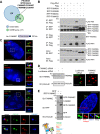
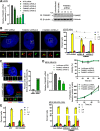

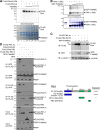
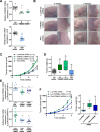
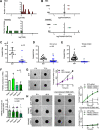
Similar articles
-
Structural and Functional Analyses of the FAM46C/Plk4 Complex.Structure. 2020 Aug 4;28(8):910-921.e4. doi: 10.1016/j.str.2020.04.023. Epub 2020 May 19. Structure. 2020. PMID: 32433990 Free PMC article.
-
YLT-11, a novel PLK4 inhibitor, inhibits human breast cancer growth via inducing maladjusted centriole duplication and mitotic defect.Cell Death Dis. 2018 Oct 18;9(11):1066. doi: 10.1038/s41419-018-1071-2. Cell Death Dis. 2018. PMID: 30337519 Free PMC article.
-
Polo-like kinase 4 kinase activity limits centrosome overduplication by autoregulating its own stability.J Cell Biol. 2010 Jan 25;188(2):191-8. doi: 10.1083/jcb.200911102. J Cell Biol. 2010. PMID: 20100909 Free PMC article.
-
PLK4: a link between centriole biogenesis and cancer.Expert Opin Ther Targets. 2018 Jan;22(1):59-73. doi: 10.1080/14728222.2018.1410140. Epub 2017 Nov 29. Expert Opin Ther Targets. 2018. PMID: 29171762 Review.
-
The PLK4-STIL-SAS-6 module at the core of centriole duplication.Biochem Soc Trans. 2016 Oct 15;44(5):1253-1263. doi: 10.1042/BST20160116. Biochem Soc Trans. 2016. PMID: 27911707 Free PMC article. Review.
Cited by
-
Dissecting the Puzzling Roles of FAM46C: A Multifaceted Pan-Cancer Tumour Suppressor with Increasing Clinical Relevance.Cancers (Basel). 2024 Apr 27;16(9):1706. doi: 10.3390/cancers16091706. Cancers (Basel). 2024. PMID: 38730656 Free PMC article. Review.
-
FAM46C Expression Sensitizes Multiple Myeloma Cells to PF-543-Induced Cytotoxicity.Biomolecules. 2025 Apr 26;15(5):623. doi: 10.3390/biom15050623. Biomolecules. 2025. PMID: 40427516 Free PMC article.
-
Fraxetin down-regulates polo-like kinase 4 (PLK4) to inhibit proliferation, migration and invasion of prostate cancer cells through the phosphatidylinositol 3-kinase (PI3K)/protein kinase B (Akt) pathway.Bioengineered. 2022 Apr;13(4):9345-9356. doi: 10.1080/21655979.2022.2054195. Bioengineered. 2022. PMID: 35387563 Free PMC article.
-
TENT5C functions as a corepressor in the ligand-bound glucocorticoid receptor and estrogen receptor α complexes.FEBS J. 2025 May 27:10.1111/febs.70137. doi: 10.1111/febs.70137. Online ahead of print. FEBS J. 2025. PMID: 40421654
-
Inhibition of FAM46/TENT5 activity by BCCIPα adopting a unique fold.Sci Adv. 2023 Apr 5;9(14):eadf5583. doi: 10.1126/sciadv.adf5583. Epub 2023 Apr 5. Sci Adv. 2023. PMID: 37018411 Free PMC article.
References
-
- Bettencourt-Dias M, et al. SAK/PLK4 is required for centriole duplication and flagella development. Curr. Biol. CB. 2005;15:2199–2207. - PubMed
-
- Habedanck R, Stierhof YD, Wilkinson CJ, Nigg EA. The Polo kinase Plk4 functions in centriole duplication. Nat. Cell Biol. 2005;7:1140–1146. - PubMed
-
- Rosario CO, et al. A novel role for Plk4 in regulating cell spreading and motility. Oncogene. 2015;34:3441–3451. - PubMed
Publication types
MeSH terms
Substances
LinkOut - more resources
Full Text Sources
Molecular Biology Databases
Miscellaneous

